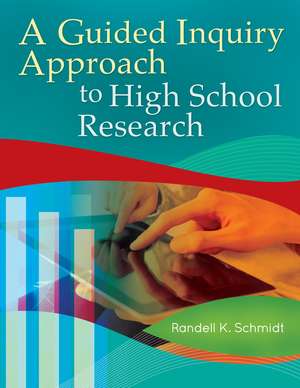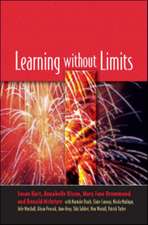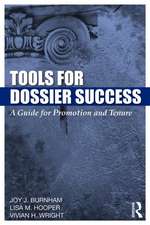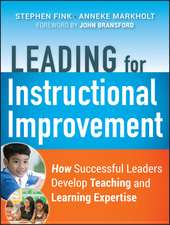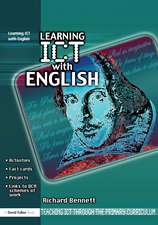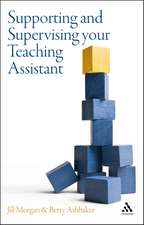A Guided Inquiry Approach to High School Research: Libraries Unlimited Guided Inquiry
Autor Randell K. Schmidten Limba Engleză Paperback – 6 feb 2013 – vârsta până la 17 ani
Preț: 242.40 lei
Preț vechi: 291.72 lei
-17% Nou
Puncte Express: 364
Preț estimativ în valută:
46.39€ • 50.37$ • 38.97£
46.39€ • 50.37$ • 38.97£
Carte tipărită la comandă
Livrare economică 22 aprilie-06 mai
Preluare comenzi: 021 569.72.76
Specificații
ISBN-13: 9781610692878
ISBN-10: 161069287X
Pagini: 200
Dimensiuni: 216 x 279 x 18 mm
Greutate: 0.59 kg
Ediția:New.
Editura: Bloomsbury Publishing
Colecția Libraries Unlimited
Seria Libraries Unlimited Guided Inquiry
Locul publicării:New York, United States
ISBN-10: 161069287X
Pagini: 200
Dimensiuni: 216 x 279 x 18 mm
Greutate: 0.59 kg
Ediția:New.
Editura: Bloomsbury Publishing
Colecția Libraries Unlimited
Seria Libraries Unlimited Guided Inquiry
Locul publicării:New York, United States
Caracteristici
Examines the task of the teaching team in guiding students in their inquiry and to provide them with the skills to find, process, and synthesize new information on their own
Notă biografică
Randell K. Schmidt, MLS, is head librarian at Gill St. Bernard's School in Gladstone, NJ.
Cuprins
ForewordPrefaceAcknowledgmentsPart I: Teacher's PracticumIntroduction to Teacher's PracticumHow to Save a Failed ProjectStitching Together Borrowed Information into a Research QuiltAssessments of the Research and Writing ProjectKuhlthau's Information Search Process (ISP)Part II: Student WorkshopsResearch in the Initiation Stage of the Information Search ProcessWorkshop 1: The AssignmentOverviewThe AssignmentStudent Handout: The Assignment, a.k.a. the SyllabusWorkshop 2Overview: What Is the Information Search Process and What Is Peer Review?What Is the Information Search Process and What Is Peer Review?Student Handout #1: What Is the Information Search Process (ISP)?Student Handout #2: Introducing the Concepts of Peer Review and Study BuddyWorkshop 3Overview: Understanding Perspective and Bias in Information SourcesUnderstanding Perspective and BiasStudent Handout #1: Understanding Perspective and Bias in Information Sources (Part I)Student Handout #2: Understanding Perspective and Bias in Information Sources (Part II)Workshop 4Overview: What Are Learning Styles?What Are Learning Styles?Student Handout: What Are Learning Styles?Workshop 5Overview: Descriptive Essay of Your Learning StyleDescriptive Essay of Your Learning StyleStudent Handout: Descriptive Essay-"How I Learn Best"Research in the Selection Stage of the Information Search ProcessWorkshop 6Overview: Browsing and SearchingBrowsing and SearchingStudent Handout #1: Browsing LessonStudent Handout #2: Searching Tips for the Online Catalogue of Library Holdings (SAMPLE)Student Handout #3: Electronic Databases-Digital SearchingWorkshop 7Overview: Going from Big to SmallGoing from Big to SmallStudent Handout #1: Going from Big to SmallStudent Handout #2: How to Go from Big to SmallWorkshop 8Overview: Information SourcesInformation SourcesStudent Handout: Examples of Information SourcesWorkshop 9Overview: Proposal-What Topic Have You Chosen?Proposal-What Topic Have You Chosen?Student Handout #1: How to Write Your ProposalStudent Handout #2: What Topic Are You Proposing?Research in the Exploration Stage of the Information Search ProcessWorkshop 10Overview: Understanding Responsibility to Intellectual Property and the Concept of PlagiarismUnderstanding Responsibility to Intellectual Property and PlagiarismStudent Handout #1: Understanding Responsibility to Intellectual PropertyStudent Handout #2: The Concept of PlagiarismWorkshop 11Overview: How to Take Research NotesHow to Take Research NotesStudent Handout #1: How to Take Research NotesStudent Handout #2: Research Note-Taking Activities (Part I)Student Handout #3: Research Note-Taking Activities (Part II)Research in the Formulation Stage of the Information Search ProcessWorkshop 12Overview: What Are Realia and Why Use Them?What Are Realia and Why Use Them?Student Handout: What Are Realia and Why Use Them?Workshop 13Overview: Using and Making Notes from a Primary SourceUsing and Making Notes from a Primary SourceStudent Handout #1: Primary Source Information: Interview or Survey (Workshop A)Student Handout #2: Primary Source Information: Video Clips, Photography, or Artwork (Workshop B)Research in the Collection Stage of the Information Search ProcessWorkshop 14Overview: Organizing Your Research Notes for an OutlineOrganizing Your Research Notes for an OutlineStudent Handout: Organizing Your Research Notes for an OutlineWorkshop 15Overview: Judging Your Research Notes and Looking for GapsJudging Your Research Notes and Looking for GapsStudent Handout: Judging Your Research Notes and Looking for GapsWorkshop 16Overview: How to Do Backdoor ResearchHow to Do Backdoor ResearchStudent Handout: How to Do Backdoor ResearchResearch in the Presentation Stage of the Information Search ProcessWorkshop 17Overview: Using Formal Language and Understanding the Difference Between Private and Public LanguageUsing Formal Language and Understanding the Difference Between Private and Public LanguageStudent Handout: Using Formal Language and Understanding the Difference Between Private and Public LanguageWorkshop 18Overview: How to Compose Your Presentation NotesHow to Compose Your Presentation NotesStudent Handout #1: How to Give a Formal SpeechStudent Handout #2: How to Compose Your Presentation NotesWorkshop 19Overview: Audio/Visuals-What Do You Need?Audio/Visuals-What Do You Need?Student Handout: Audio/Visuals-What Do You Need?Workshop 20Overview: Using EasyBib to Complete the BibliographyUsing EasyBib to Complete the BibliographyStudent Handout: Using EasyBib to Complete the BibliographyWorkshop 21Overview: Practicing the PresentationStudent Handout: Presentation InstructionsResearch in the Assessment Stage of the Information Search ProcessWorkshop 22Overview: Essay to Reflect on Your Learning: "What Did I Learn About Myself?"Student Handout: Essay to Reflect on Your Learning: "What Did I Learn About Myself?"AppendicesA. Sample Course OutlineB. First, Second, and Third InstrumentsC. Letter Sent Home in Preparation for Student PresentationsD. The Appeal of the Research and Writing ProgramE. Research and Writing Project Presentation Schedule SampleF. Choosing the Best PresentationG. Noting the Likes and Dislikes of the ProjectH. Research Presentation RubricReferencesIndex
Recenzii
Using a variety of styles, this title demonstrates how to challenge secondary students to find, process, and think about new information so that successful research occurs. The title includes step-by-step guidance as well as samples of many needed materials.
